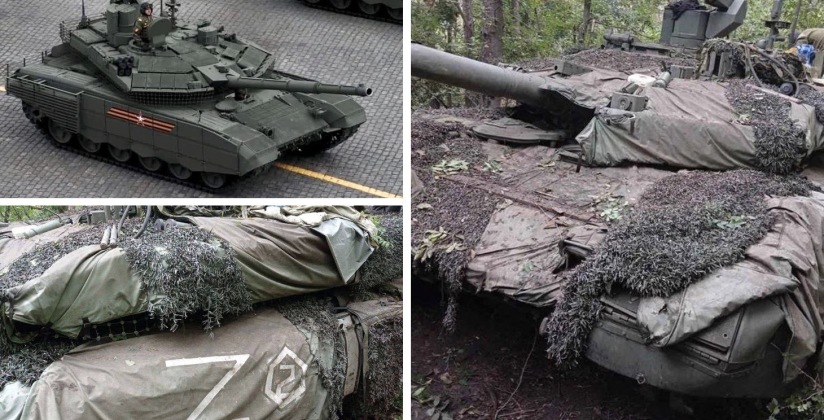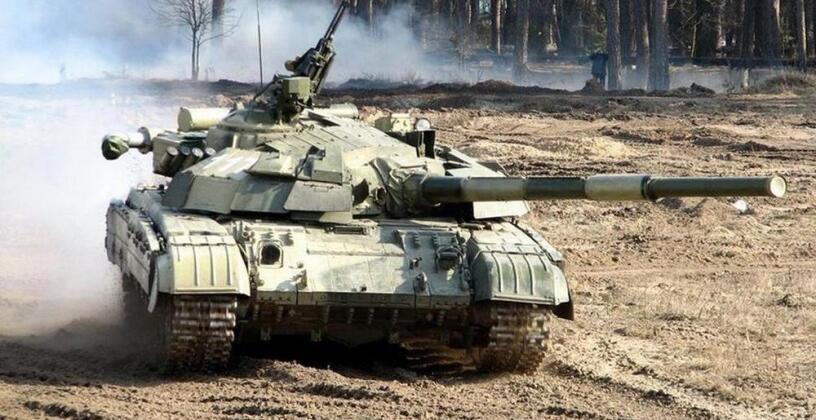Since the outbreak of the Russian-Ukrainian War in February questions have been widely raised regarding the absence of top end Russian tanks from the battlefield, with speculation that this signified either that they were not ready for service or else were being conserved to confront more powerful NATO adversaries on other fronts. The most capable variant of the T-90 the T-90M, which entered service in April 2020, first appeared in Ukraine in April 2022 after other classes had taken significant losses. At least one T-90M was destroyed in combat, although its performance and survivability were still overwhelmingly superior to the T-72s, T-80s and older T-90 variants which the Russian Army had previously relied on. A second T-90M was lost in September, albeit through capture by Ukrainian forces as Russian units retreated rather than to enemy fire, marking a major blow to the program since its technologies would inevitably be compromised through extensive study by NATO. While the T-90M represented Russia’s second most capable tank class, it was the absence of the T-14 Armata which fuelled the most speculation, with the tank effectively in a league of its own as no overseas rivals boasted similar capabilities, but having faced significant delays being prepared for frontline service due to various shortcomings in the Russian defence sector.

A single T-14 was reportedly sighted on October 8 near the village of Midginskaya in Luhansk – a formerly formerly governed and self proclaimed People’s Republic recently absorbed into the Russian Federation. The tank’s deployment comes amid growing signs that Russia is set to escalate its war effort including through mass mobilisation, rapid commissioning of more T-90s and possibly opening of a second land front through Belarus. Although even older Russian tanks such as the T-72B3 boast very significant advantages over Ukraine’s 1970s armoured units, the T-14’s very high survivability, powerful sensors and much higher mobility will make it a potent force on the battlefield even if fielded in limited numbers. This is particularly true if it is deployed to serve as a command tank for other Russian armoured units, as was previously suggested by a number of analysts, capitalising on its high situational awareness and active protection systems to support large T-90 or T-72 units. The psychological impact of the tank’s presence, both for allied and for enemy morale, may also be significant marking a possible turning point in the war effort after weeks of losses.

Although the T-14’s Vacuum-1 APFSDS projectiles and ability to withstand hits from any known tank projectile are key attributes for a potential clash with NATO, Ukraine’s lack of advanced tanks means that these capabilities may well not be its most prized attributes. The Armata’s frontal base armour protection of over 900mm, paired with Malachit explosive reactive armour and the AFGHANIT active protection system, have the potential to provide high survivability against handheld Javelin anti tank missiles which have reportedly been a major cause of Russian armour losses since the war’s outbreak. Ukraine’s Javelin arsenal is considered the second largest and possibly even the largest in the world following sizeable deliveries from the United States, with the missiles providing an asymmetric means of compensating for the weakness of its own tanks. The T-14’s Use of a separate crew capsule also provides much higher crew survivability, which furthers its suitability for command roles.

With Ukraine relying on mass infantry formations and outnumbering the Russian contingent in the country several times over, the T-14’s advanced anti infantry capabilities using Telnik high explosive fragmentation projectiles is expected to be highly valued potentially much moreso than Vacuum-1. Unlike T-72 and T-90 tanks which reportedly have a reversing speed of only around 4km/h, forcing crews to either abandon their vehicles or expose their weak rear armour when withdrawing, the T-14 can move at 75-80km/h both in forward and in reverse modes meaning the chance of the tank being neutralised or captured will be significantly lower. While Russia’s ability to built more T-14s quickly enough to participate meaningfully in the war in Ukraine remains in question, should deployments grow it could well become a priority for Ukrainian forces and their NATO allies to seek to acquire one for study as was done with the T-90M. The T-14 program is itself expected to receive considerably more attention due to both rising tensions with NATO, and to neighbouring Poland’s acquisition of South Korean K2 tanks which are significantly more capable than other vehicles fielded in the Western Bloc.
Update: It has since emerged that footage of the T-14 was in fact taken at a Russian military base, likely by reservists. This solves the contradiction of the T-14 not being technically in active service but still being deployed to the frontline – although a precedent for this had been sent by Su-57 prototypes being deployed to Syria several times from February 2018 despite not yet being in the Russian Air Force. The likelihood of the T-14 program receiving greater investment as a result of operations in Ukraine and being brought into service sooner nevertheless remains, while the possibility of the tanks being deployed to the Donbas even before entering active service cannot be entirely ruled out even if for testing and media purposes.
